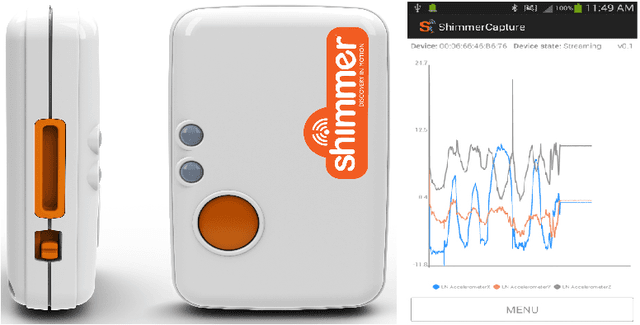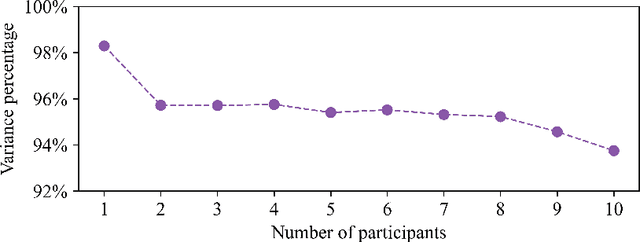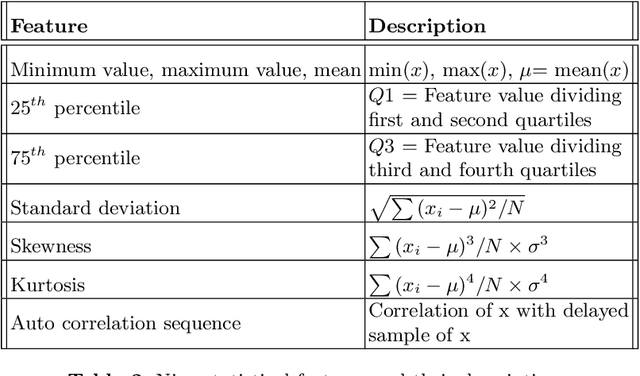Mrinmoy Roy
OBESEYE: Interpretable Diet Recommender for Obesity Management using Machine Learning and Explainable AI
Aug 05, 2023Abstract:Obesity, the leading cause of many non-communicable diseases, occurs mainly for eating more than our body requirements and lack of proper activity. So, being healthy requires heathy diet plans, especially for patients with comorbidities. But it is difficult to figure out the exact quantity of each nutrient because nutrients requirement varies based on physical and disease conditions. In our study we proposed a novel machine learning based system to predict the amount of nutrients one individual requires for being healthy. We applied different machine learning algorithms: linear regression, support vector machine (SVM), decision tree, random forest, XGBoost, LightGBM on fluid and 3 other major micronutrients: carbohydrate, protein, fat consumption prediction. We achieved high accuracy with low root mean square error (RMSE) by using linear regression in fluid prediction, random forest in carbohydrate prediction and LightGBM in protein and fat prediction. We believe our diet recommender system, OBESEYE, is the only of its kind which recommends diet with the consideration of comorbidities and physical conditions and promote encouragement to get rid of obesity.
Machine Learning Applications In Healthcare: The State Of Knowledge and Future Directions
Jul 26, 2023Abstract:Detection of easily missed hidden patterns with fast processing power makes machine learning (ML) indispensable to today's healthcare system. Though many ML applications have already been discovered and many are still under investigation, only a few have been adopted by current healthcare systems. As a result, there exists an enormous opportunity in healthcare system for ML but distributed information, scarcity of properly arranged and easily explainable documentation in related sector are major impede which are making ML applications difficult to healthcare professionals. This study aimed to gather ML applications in different areas of healthcare concisely and more effectively so that necessary information can be accessed immediately with relevant references. We divided our study into five major groups: community level work, risk management/ preventive care, healthcare operation management, remote care, and early detection. Dividing these groups into subgroups, we provided relevant references with description in tabular form for quick access. Our objective is to inform people about ML applicability in healthcare industry, reduce the knowledge gap of clinicians about the ML applications and motivate healthcare professionals towards more machine learning based healthcare system.
Prevalence and major risk factors of non-communicable diseases: A Hospital-based Cross-Sectional Study in Dhaka, Bangladesh
Mar 03, 2023Abstract:Objective: The study aimed to determine the prevalence of several non-communicable diseases (NCD) and analyze risk factors among adult patients seeking nutritional guidance in Dhaka, Bangladesh. Result: Our study observed the relationships between gender, age groups, obesity, and NCDs (DM, CKD, IBS, CVD, CRD, thyroid). The most frequently reported NCD was cardiovascular issues (CVD), which was present in 83.56% of all participants. CVD was more common in male participants. Consequently, male participants had a higher blood pressure distribution than females. Diabetes mellitus (DM), on the other hand, did not have a gender-based inclination. Both CVD and DM had an age-based progression. Our study showed that chronic respiratory illness was more frequent in middle-aged participants than in younger or elderly individuals. Based on the data, every one in five hospitalized patients was obese. We analyzed the co-morbidities and found that 31.5% of the population has only one NCD, 30.1% has two NCDs, and 38.3% has more than two NCDs. Besides, 86.25% of all diabetic patients had cardiovascular issues. All thyroid patients in our study had CVD. Using a t-test, we found a relationship between CKD and thyroid (p-value 0.061). Males under 35 years have a statistically significant relationship between thyroid and chronic respiratory diseases (p-value 0.018). We also found an association between DM and CKD among patients over 65 (p-value 0.038). Moreover, there has been a statistically significant relationship between CKD and Thyroid (P < 0.05) for those below 35 and 35-65. We used a two-way ANOVA test to find the statistically significant interaction of heart issues and chronic respiratory illness, in combination with diabetes. The combination of DM and RTI also affected CKD in male patients over 65 years old.
Hair and Scalp Disease Detection using Machine Learning and Image Processing
Dec 31, 2022Abstract:Almost 80 million Americans suffer from hair loss due to aging, stress, medication, or genetic makeup. Hair and scalp-related diseases often go unnoticed in the beginning. Sometimes, a patient cannot differentiate between hair loss and regular hair fall. Diagnosing hair-related diseases is time-consuming as it requires professional dermatologists to perform visual and medical tests. Because of that, the overall diagnosis gets delayed, which worsens the severity of the illness. Due to the image-processing ability, neural network-based applications are used in various sectors, especially healthcare and health informatics, to predict deadly diseases like cancers and tumors. These applications assist clinicians and patients and provide an initial insight into early-stage symptoms. In this study, we used a deep learning approach that successfully predicts three main types of hair loss and scalp-related diseases: alopecia, psoriasis, and folliculitis. However, limited study in this area, unavailability of a proper dataset, and degree of variety among the images scattered over the internet made the task challenging. 150 images were obtained from various sources and then preprocessed by denoising, image equalization, enhancement, and data balancing, thereby minimizing the error rate. After feeding the processed data into the 2D convolutional neural network (CNN) model, we obtained overall training accuracy of 96.2%, with a validation accuracy of 91.1%. The precision and recall score of alopecia, psoriasis, and folliculitis are 0.895, 0.846, and 1.0, respectively. We also created a dataset of the scalp images for future prospective researchers.
CovidAlert -- A Wristwatch-based System to Alert Users from Face Touching
Nov 30, 2021



Abstract:Worldwide 2019 million people have been infected and 4.5 million have lost their lives in the ongoing Covid-19 pandemic. Until vaccines became widely available, precautions and safety measures like wearing masks, physical distancing, avoiding face touching were some of the primary means to curb the spread of virus. Face touching is a compulsive human begavior that can not be prevented without making a continuous consious effort, even then it is inevitable. To address this problem, we have designed a smartwatch-based solution, CovidAlert, that leverages Random Forest algorithm trained on accelerometer and gyroscope data from the smartwatch to detects hand transition to face and sends a quick haptic alert to the users. CovidALert is highly energy efficient as it employs STA/LTA algorithm as a gatekeeper to curtail the usage of Random Forest model on the watch when user is inactive. The overall accuracy of our system is 88.4% with low false negatives and false positives. We also demonstrated the system viability by implementing it on a commercial Fossil Gen 5 smartwatch.
 Add to Chrome
Add to Chrome Add to Firefox
Add to Firefox Add to Edge
Add to Edge